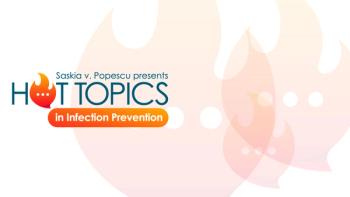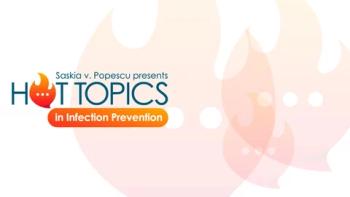
Artificial intelligence increases infection prevention and control measures in health care facilities and beyond.

Artificial intelligence increases infection prevention and control measures in health care facilities and beyond.

Now is the time to enjoy the holidays, but it is not time to forget to protect against RSV, COVID-19, and influenza.

As the festive holidays begin, even with vaccinations and boosters, COVID-19 still remains a concern for long COVID-19 and other severe long-term effects.

When an infection preventionist, environmental hygienist, or any other health care worker sees the need and value of a technology, product, or program, but purchasing it isn’t in the department or facility’s funds, how do you convince the C-suite to buy it anyway?

A student-led COVID-19 contact-tracer program reduced exposures and infections at start of the pandemic.

Hospitalized children may be scared and uncertain, and therapy animals can help ease their insecurities. But what is done to protect the humans—and the animals—from infectious diseases?

Take 5 minutes to catch up on Infection Control Today’s highlights for the week ending November 18, 2022.

Most often, the first place a patient enters a hospital is through the emergency department and sometimes by emergency medical services. Where else to better stop Clostridioides difficile from coming into the hospital than at the entrance?

Saskia v. Popescu, PhD, MPH, MA, CIC, covers updates on health care associated-infections, masking at schools, and Ebola in Uganda and Dengue in Arizona. Read on for all the details.

While treatments are available for hepatitis B virus, no long-term cure has been developed. Progress so far indicates that this core inhibitor candidate is potentially ready for clinical studies.

No new safety concerns with this COVID-19 vaccine were reported.

Hebah Ibrahim Al Zamel, MSN, CIC, CPHQ, currently living in Dubai discusses becoming a member of the APIC CDS Education Committee and what infection prevention is like in Dubai.

Take 5 minutes to catch up on Infection Control Today’s highlights for the week ending November 11, 2022.

Infection prevention and control personnel don't elect to ever stop. Dr. Popescu tells us what's in the news this week of the mid-term elections.

Extra-intestinal pathogenic Escherichia coli (ExPEC) and Staphylococcus aureus (S. aureus) are 2 of the leading causes of severe sepsis, and Janssen Pharmaceutical Companies of Johnson & Johnson is developing vaccines to fight those diseases.

Association for Professionals in Infection Control and Epidemiology’s (APIC’s) CDS Conference is virtual this year, and the topics are environmental hygiene and sterile processing.

What can the individual do, especially those who are underserved, to protect themselves against sexually transmitted infections, including chlamydia, gonorrhea, and syphilis, and complicated with monkeypox.

While sequencing-based diagnostics have been used since the 1970s, only recently has the technology been used for infectious diseases.

CDC discusses potential proposals to redefine spread and to produce uniform guidelines across different types of facilities because public health interventions do not cause immunological debt but instead may prevent immunocompromising infections.

From safety to infection control, facial recognition in health care facilities is a new tool to keep both patients and staff safe from workplace violence.

Take 5 minutes to catch up on Infection Control Today’s highlights for the week ending November 4, 2022.

Infection Control Today's® Product Locator is a monthly column highlighting some of the latest advanced technology in the infection prevention field.

What is scary in infection prevention and control? Dr. Popescu tells us what's in the news this week of Halloween.

Infection prevention in pediatrics is crucial to keep babies and children healthy. Some of the main tools are hand washing and vaccinations; however, there is more to do.

What exactly does an infection preventionist (IP) do all day? One IP gives ICT’s readers an inside look.